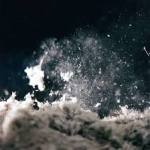Know Your Risk Factors: How Clean Air Can Help Prevent Lung Cancer
 Breathe deep! Is the air you are breathing clean? Is it free from harmful contaminants or carcinogens? Not everyone who is diagnosed with lung cancer is a smoker, and although that small, nicotine filled stick is the primary cause of many lung cancer diagnoses, it is not ALWAYS the cause. In fact, many Canadians are diagnosed with lung cancer each year, never having smoked a day in their lives. That is why is it so important to know your lung cancer risk factors, and learn how one can prevent damage to their lungs via a healthier lifestyle. Knowing what’s in your air is the greatest gift you can give yourself in the quest for lung cancer prevention, so here are some things to watch out for:
Breathe deep! Is the air you are breathing clean? Is it free from harmful contaminants or carcinogens? Not everyone who is diagnosed with lung cancer is a smoker, and although that small, nicotine filled stick is the primary cause of many lung cancer diagnoses, it is not ALWAYS the cause. In fact, many Canadians are diagnosed with lung cancer each year, never having smoked a day in their lives. That is why is it so important to know your lung cancer risk factors, and learn how one can prevent damage to their lungs via a healthier lifestyle. Knowing what’s in your air is the greatest gift you can give yourself in the quest for lung cancer prevention, so here are some things to watch out for:
Quit the Stick! When it comes to lung cancer, there is no “safe” level of smoking. As smoking contributes to a majority of all lung cancer deaths, the most influential act a person can make in their lung cancer prevention quest is to quit the stick, or not start in the first place. The statistics don’t lie, and those aged 55 or over are at the highest risk.
 Stay Away From Secondhand Smoke! When you are exposed to second hand smoke, you are being exposed to more than 60 known cancer causing agents, or carcinogens. These agents can interrupt the normal development of cells and become the onset of cancer. If you smoke, keep the smoking outside of your home or vehicle, so you are not exposing others to this risk. If a quest in your home is a smoker, ask them to take the stick outside and keep your indoor air clean.
Stay Away From Secondhand Smoke! When you are exposed to second hand smoke, you are being exposed to more than 60 known cancer causing agents, or carcinogens. These agents can interrupt the normal development of cells and become the onset of cancer. If you smoke, keep the smoking outside of your home or vehicle, so you are not exposing others to this risk. If a quest in your home is a smoker, ask them to take the stick outside and keep your indoor air clean.
Know Your Radon Risk! Radon is present in almost all air, and we breathe in radon outdoors at very low levels every day. But, as high levels of radon put people at an increased risk of developing lung cancer, it’s important to know your exposure risk. In an indoor environment that is well insulated, tightly sealed, or build on land that is high in radium, thorium or uranium, we may see increased levels of radon. With inadequate ventilation, if radon is seeping through cracks in your basement foundation, floor or walls, this can increase your risk of lung cancer. Professional air quality testing can help you learn your expose level.
 Is There Airborne Asbestos? Asbestos is a dangerous fibrous material that is still found in many homes, commercial buildings and workplaces within Canada and much of North America. It is a carcinogen that, when airborne, can greatly increase one’s rink of lung cancer, specifically mesothelioma. Commonly, many home or business owners may not even know that they have disturbed asbestos containing material and inadvertently caused the fibers to become airborne where they can pose a significant health risk. If unsure, have your home assessed for potential asbestos containing material and remember to always test suspicious materials before renovating.
Is There Airborne Asbestos? Asbestos is a dangerous fibrous material that is still found in many homes, commercial buildings and workplaces within Canada and much of North America. It is a carcinogen that, when airborne, can greatly increase one’s rink of lung cancer, specifically mesothelioma. Commonly, many home or business owners may not even know that they have disturbed asbestos containing material and inadvertently caused the fibers to become airborne where they can pose a significant health risk. If unsure, have your home assessed for potential asbestos containing material and remember to always test suspicious materials before renovating.
Do You Know Your Workplace Exposure Levels? Talk to your employer about having workplace air quality testing, or exposure limit testing conducted, particularly if there may be exposure to diesel exhaust, gasoline, vinyl chloride, chloromethyl ethers and other carcinogens that may be present within a work environment. Knowing your risks, and ensuring proper personal protective equipment is always worn when required, can help prevent the lung cancer risks associated with exposure.
(Visited 374 times, 1 visits today)






 Breathe deep! Is the air you are breathing clean? Is it free from harmful contaminants or carcinogens? Not everyone who is diagnosed with lung cancer is a smoker, and although that small, nicotine filled stick is the primary cause of many lung cancer diagnoses, it is not ALWAYS the cause. In fact, many Canadians are diagnosed with lung cancer each year, never having smoked a day in their lives. That is why is it so important to know your lung cancer risk factors, and learn how one can prevent damage to their lungs via a healthier lifestyle. Knowing
Breathe deep! Is the air you are breathing clean? Is it free from harmful contaminants or carcinogens? Not everyone who is diagnosed with lung cancer is a smoker, and although that small, nicotine filled stick is the primary cause of many lung cancer diagnoses, it is not ALWAYS the cause. In fact, many Canadians are diagnosed with lung cancer each year, never having smoked a day in their lives. That is why is it so important to know your lung cancer risk factors, and learn how one can prevent damage to their lungs via a healthier lifestyle. Knowing  Stay Away From Secondhand Smoke! When you are exposed to second hand smoke, you are being exposed to more than 60 known cancer causing agents, or carcinogens. These agents can interrupt the normal development of cells and become the onset of cancer. If you smoke, keep the smoking outside of your home or vehicle, so you are not exposing others to this risk. If a quest in your home is a smoker, ask them to take the stick outside and keep your indoor air clean.
Stay Away From Secondhand Smoke! When you are exposed to second hand smoke, you are being exposed to more than 60 known cancer causing agents, or carcinogens. These agents can interrupt the normal development of cells and become the onset of cancer. If you smoke, keep the smoking outside of your home or vehicle, so you are not exposing others to this risk. If a quest in your home is a smoker, ask them to take the stick outside and keep your indoor air clean. Is There Airborne Asbestos? Asbestos is a dangerous fibrous material that is still found in many homes, commercial buildings and workplaces within Canada and much of North America. It is a carcinogen that, when airborne, can greatly increase one’s rink of lung cancer, specifically mesothelioma. Commonly, many home or business owners may not even know that they have disturbed asbestos containing material and inadvertently caused the fibers to become airborne where they can pose a significant health risk. If unsure, have your home assessed for potential asbestos containing material and remember to always test suspicious materials before renovating.
Is There Airborne Asbestos? Asbestos is a dangerous fibrous material that is still found in many homes, commercial buildings and workplaces within Canada and much of North America. It is a carcinogen that, when airborne, can greatly increase one’s rink of lung cancer, specifically mesothelioma. Commonly, many home or business owners may not even know that they have disturbed asbestos containing material and inadvertently caused the fibers to become airborne where they can pose a significant health risk. If unsure, have your home assessed for potential asbestos containing material and remember to always test suspicious materials before renovating.